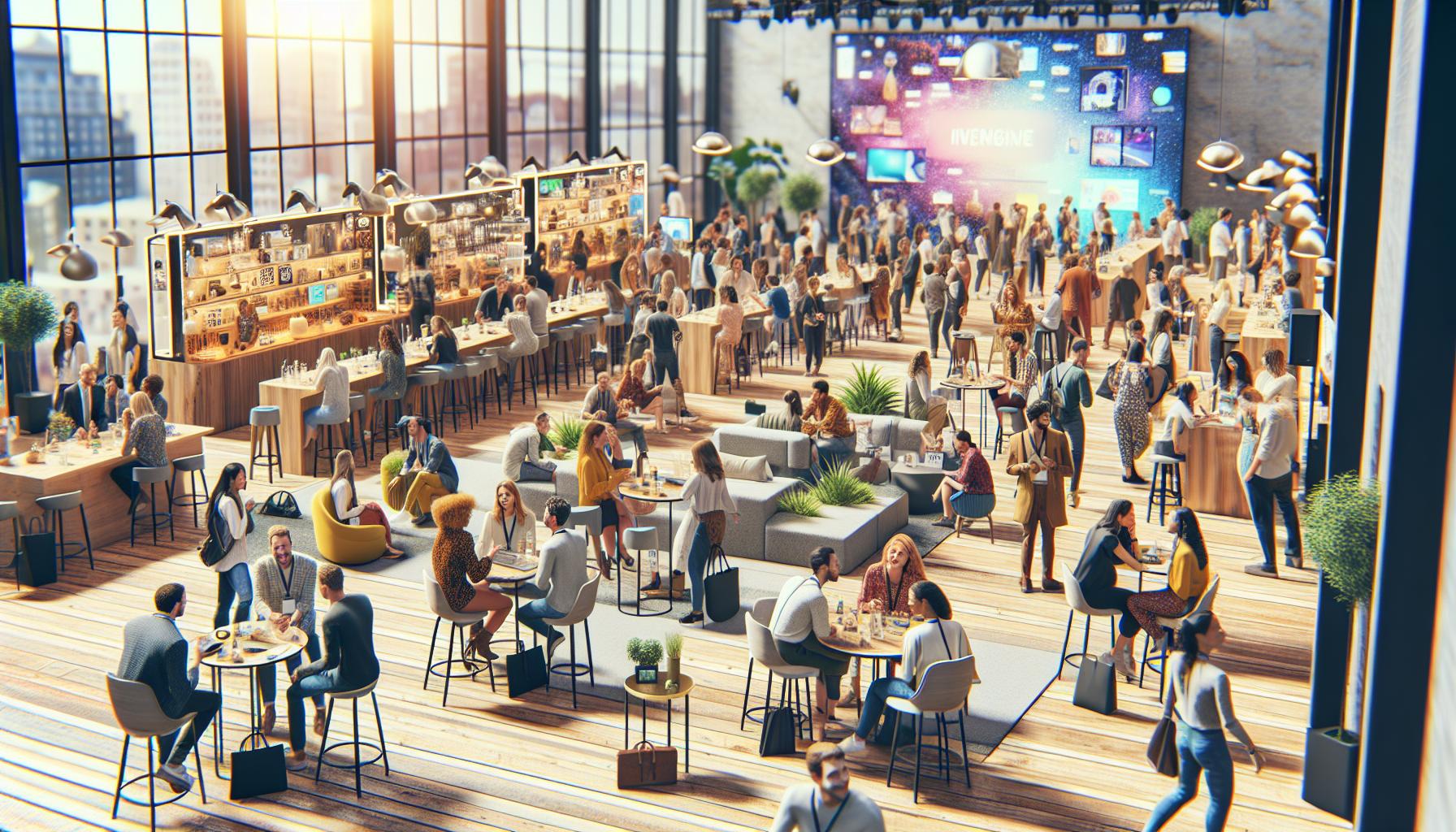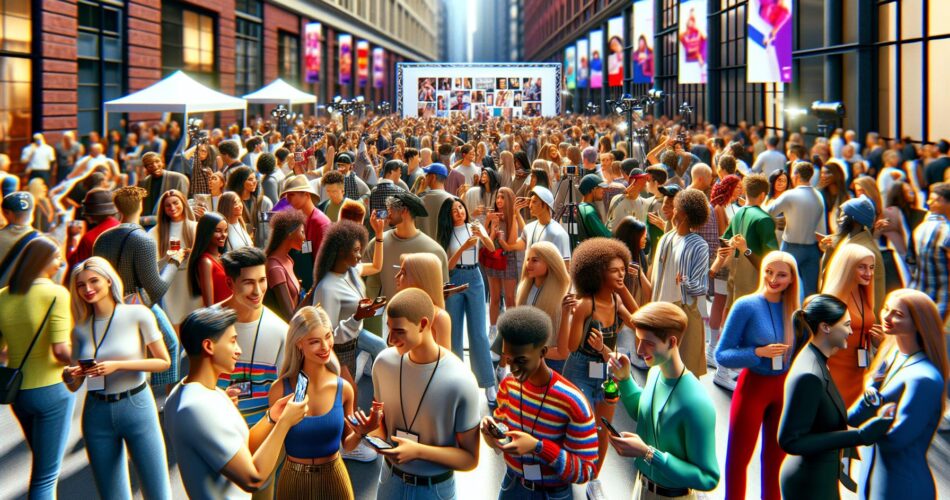Imagine a room buzzing with social media stars, brands eagerly vying for attention and endless opportunities for collaboration. That's the electric atmosphere of influencer marketing events where digital creators and businesses unite to forge powerful partnerships.
These dynamic gatherings have transformed from simple meet-and-greets into sophisticated networking powerhouses. With the influencer marketing industry projected to reach $21.1 billion in 2023, these events have become essential platforms for brands to connect with content creators who can amplify their message. From intimate brand launches to massive creator conferences, they're reshaping how businesses approach digital marketing and audience engagement.
Influencer Marketing Events
Influencer marketing events unite content creators brands to foster authentic partnerships through in-person interactions. These strategic gatherings facilitate direct networking collaboration between social media influencers marketers.
Types of Influencer Events
- Product Launch Events: Brands showcase new products to influencers through immersive experiences demonstrations
- Creator Conferences: Large-scale gatherings like VidCon feature panels workshops networking sessions
- Brand-Hosted Meetups: Intimate gatherings where selected influencers connect with brand representatives
- Sponsored Retreats: Multi-day experiences in exclusive locations combining work leisure activities
- Industry Summits: Professional events focused on trend discussions market insights strategy sharing
- Pop-Up Activations: Short-term experiential events designed for content creation social sharing
- Authentic Content Creation
- Influencers capture real-time behind-the-scenes moments
- Brands receive diverse content perspectives from multiple creators
- Live demonstrations generate genuine product reactions
- Network Expansion
- Creators connect with industry peers potential collaborators
- Brands discover emerging talent in their target markets
- Both parties establish long-term professional relationships
- Professional Development
- Creators learn latest industry trends marketing strategies
- Brands gain insights into creator content preferences
- Participants access exclusive market research analytics
- Immediate Engagement
- Live social media coverage increases brand visibility
- Real-time audience interaction through event hashtags
Planning a Successful Influencer Event

Strategic planning transforms influencer events into powerful marketing opportunities that generate measurable results. Every element requires careful consideration to align with brand objectives while creating memorable experiences.
Setting Clear Goals and Objectives
Effective influencer events start with specific measurable goals tied to marketing objectives. Brands establish key performance indicators (KPIs) like content creation targets, social media impressions, engagement rates or sales conversions. Common objectives include:
- Generate authentic brand content through 15-20 influencer posts
- Achieve 500,000+ social media impressions across platforms
- Secure 10+ long-term brand partnerships
- Drive $50,000 in direct product sales through influencer codes
- Increase brand awareness by 25% among target demographics
Choosing the Right Influencers
Influencer selection impacts event success through audience alignment, engagement rates and content quality. Selection criteria focuses on:
- Audience demographics matching target market
- Engagement rates above 3% on relevant platforms
- Content style aligned with brand aesthetics
- Previous successful brand collaborations
- Professional reputation within industry networks
- Geographic location relative to event venue
- Scheduling availability during event dates
- Multiple photo-friendly spaces with natural lighting
- Private areas for networking conversations
- Technical infrastructure for live streaming
- Interactive brand activation zones
- Comfortable seating arrangements
- Professional staging equipment
- Convenient location accessibility
- Weather contingency options
- WiFi capacity for multiple users
Creating Engaging Event Content

Engaging content creation forms the cornerstone of successful influencer marketing events. Strategic content planning maximizes brand visibility while providing valuable material for both creators and sponsors.
Live Streaming Strategies
Live streaming transforms influencer events into interactive digital experiences with expanded reach. Platforms like Instagram Live, TikTok Live and YouTube Live enable real-time engagement through comments, reactions and Q&A sessions. Dedicated streaming stations equipped with professional lighting rigs deliver high-quality broadcasts to remote audiences. Multiple camera angles capture different perspectives of keynote speeches, panel discussions and product demonstrations. Analytics from live streams provide instant feedback on viewer engagement metrics, peak watching times and audience demographics. Technical teams monitor stream quality, manage chat moderation and troubleshoot connectivity issues throughout the broadcast.
Photo and Video Opportunities
Strategic photo zones feature branded backdrops, professional lighting setups and interactive props for content creation. Roaming photographers document candid moments while videographers capture b-roll footage for post-event content. Designated spaces include:
- Product showcase areas with 360-degree photo capabilities
- Step-and-repeat walls featuring sponsor logos
- Interactive installations designed for Instagram Reels
- Natural light studios for beauty content creation
- Behind-the-scenes spaces for authentic storytelling moments
Professional editing stations allow creators to produce and publish content during the event. Mobile charging stations ensure devices stay powered for continuous content capture throughout activities.
Measuring Event Success

Quantifying the impact of influencer marketing events requires comprehensive tracking systems that measure both immediate engagement metrics and long-term business outcomes. Professional analytics tools monitor key performance indicators to evaluate event effectiveness across multiple channels.
Key Performance Metrics
Social media engagement analytics track event hashtag usage, mentions, shares, likes, comments, and follower growth rates during the event period. Content performance metrics evaluate the quality of created content through impressions, reach, click-through rates, and audience retention. Brand sentiment analysis measures shifts in audience perception through social listening tools that detect positive mentions, brand affinity scores, and emotional responses. Event-specific metrics include attendee participation rates, live stream viewer counts, session attendance numbers, and post-event survey responses from both influencers and audience members.
ROI Tracking Methods
Attribution modeling connects event activities to tangible business outcomes through unique tracking codes, affiliate links, and custom landing pages. Digital analytics platforms measure direct sales impact through tracked conversions, referral traffic, and customer acquisition costs from event-generated content. Conversion path analysis identifies touchpoints between event exposure and purchase decisions using multi-channel tracking systems. Long-term value assessment examines sustained engagement rates, recurring partnerships, and audience growth patterns in the months following the event. Cost-per-engagement calculations compare total event investment against cumulative engagement metrics to determine efficiency ratios.
Best Practices for Event Management
Effective event management transforms influencer marketing events into seamless experiences that maximize value for all stakeholders. Strategic planning optimizes resource allocation while minimizing potential disruptions.
Budget Planning
A comprehensive budget framework allocates resources across essential event components. Major cost categories include venue rental, technical equipment, catering services, talent fees for influencers, production crew compensation, marketing materials, security services, insurance coverage, and emergency funds. The budget distribution follows industry benchmarks:
| Budget Category | Percentage Allocation |
|---|---|
| Venue & Setup | 30-35% |
| Talent & Staff | 25-30% |
| Technical Equipment | 15-20% |
| Marketing & Materials | 10-15% |
| Contingency Fund | 10% |
Real-time budget tracking tools monitor expenses against allocations to maintain financial control throughout the event lifecycle.
Risk Management
Event risk mitigation strategies protect brands from potential challenges during influencer marketing events. Key risk areas include:
- Technical failures: Backup equipment systems for lighting, audio equipment, streaming platforms
- Creator no-shows: Secondary talent roster with pre-confirmed availability
- Content rights: Clear contractual agreements specifying ownership, usage rights, licensing terms
- Privacy concerns: Data protection protocols for attendee information, consent forms, media releases
- Health & safety: Emergency response plans, medical staff, security personnel, crowd management procedures
- Brand reputation: Crisis communication protocols, social media monitoring tools, content moderation systems
Professional liability insurance covers specific event-related risks with appropriate coverage limits based on event scale.
Catalysts for Brand-Creator
Influencer marketing events have transformed into powerful catalysts for brand-creator collaborations in today's digital landscape. These strategic gatherings offer unique opportunities for authentic partnerships while driving measurable business results through engaging content creation and real-time audience interaction.
The success of these events hinges on meticulous planning strategic influencer selection and robust measurement systems. When executed effectively they create lasting value for brands creators and audiences alike. As the influencer marketing industry continues to evolve these events will remain essential platforms for fostering meaningful connections and driving digital marketing success.

